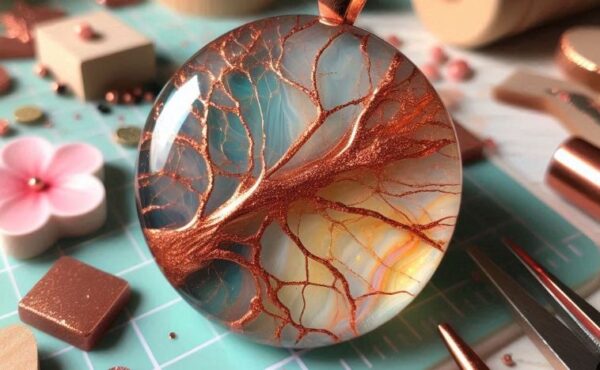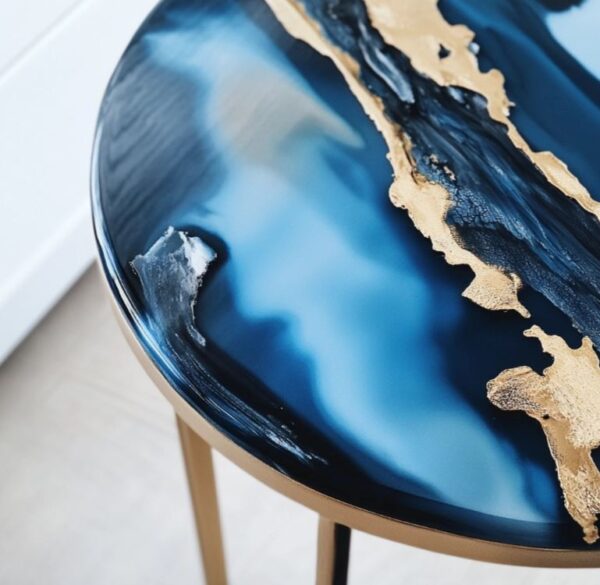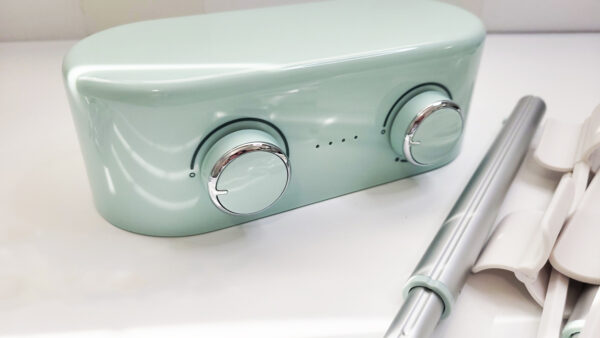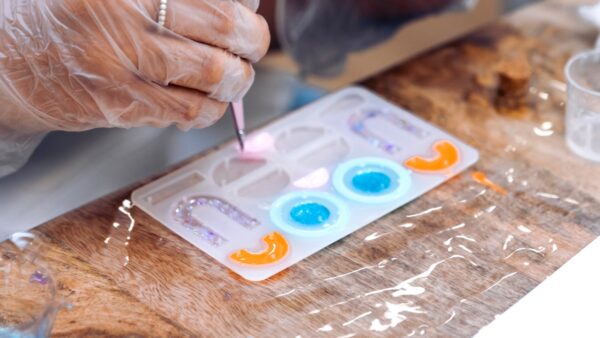How To Clean Resin out of Silicone Cups
Welcome to a guide that will give you ideas on how to clean resin out of silicone cups! Keeping your resin cups clean is essential for maintaining the quality of your work and ensuring longevity.
Resin and UV resins can be a tricky material to clean, but fear not! In this collection of tips, we’ll walk you through the process, providing insights and techniques to help you achieve sparkling, resin-free cups with ease. Read all about our best tips for using resin to learn more.
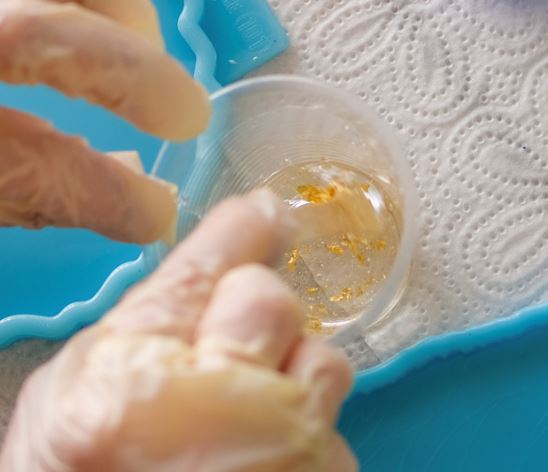
Say goodbye to sticky residues and hello to pristine vessels for your artistic endeavors. Let’s dive into the world of resin cup cleaning and discover the best practices to keep your creative space shining bright.
HOW TO CLEAN RESIN MIXING CUPS & MOLDS
1. Wipe out the mixing cups & molds
This is the first way to clean epoxy out of cups. First get all of the resin out of the cups by wiping them out with a paper towel or baby wipe while the resin has not hardened yet, all while wearing nitrile gloves. Do not use any materials that will leave lint in your cups. Avoid tissue or fabric cloths.
This will help get out any lingering residue, glitter or other inclusions without making an extra mess in your cups.
The paper towel absorbs any remaining liquid or semi-cured resin, preventing potential contamination and maintaining accurate measurements for next time.

Wearing nitrile gloves adds an extra layer of protection, keeping your hands clean and safeguarding against any skin contact with resin components.
To dispose of the paper towel, let the resin cure and then you can discard it with your household waste.
2. Make a baking soda paste
For a budget-friendly and eco-friendly way to tackle resin cleanup, consider using a paste made from water and baking soda.
This simple mixture, can work wonders in removing stubborn resin residues from your mixing cups.
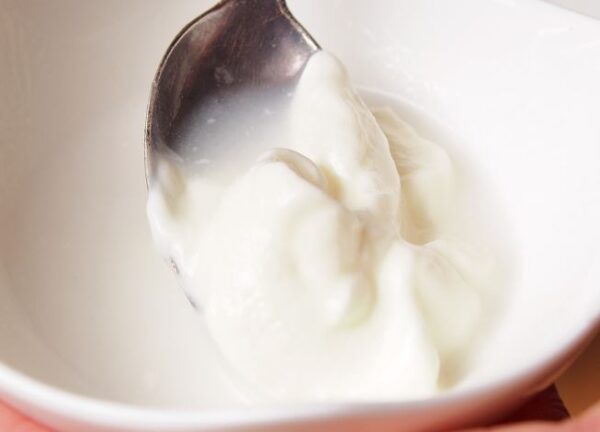
Just mix a bit of baking soda with water to create a paste, and gently scrub it onto the cups. The gentle abrasive nature of baking soda helps break down the resin, making it easier to wipe it away with paper towel.
3. Baby wipe for residue
If you still have some spots of resin then you can use a baby wipe. These wipes have oils on them to help wipe away the resin.
This helps dissolve and lift the resin, leaving your cups ready for the final cleaning with soap and water. See our guide on how to get uncured resin out of molds.
4. Clean with warm, soapy water
Now that you have all of the resin out, you just need to clean the little bit of residue left on the cups and set them to dry.
Basically, you just grab your cup, fill it up with warm water, and squirt in a bit of dish soap. The warm water helps soften up that sticky resin, and the soap gets in there to break it down.
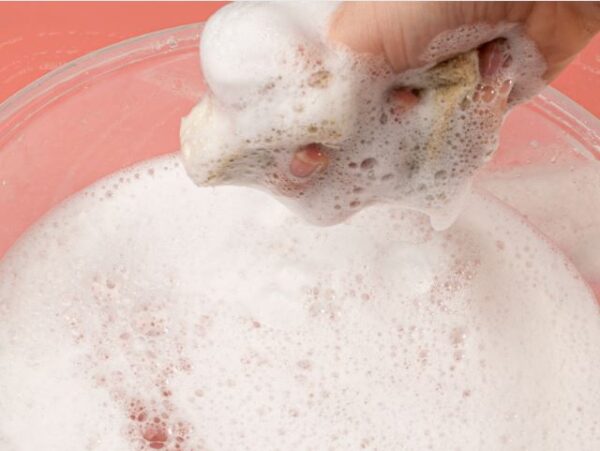
Then, take a sponge or brush and give it a good scrub. The stickiness starts to come off, and your cup gets back to its clean self. Just make sure to keep your gloves on so that you are not getting resin on your skin.
Never wash resin cups or anything that you use resin for in your sink. This includes dried resin and drops of resin because you can ruin your plumbing, especially over time. If you are worried about resin getting into your pipes, then have a washing bucket handy.
5. Let the resin harden in the cup
Sometimes, allowing the resin to fully harden in the cup before attempting removal is the way to go. This is especially good for larger cups and silicone mixing cups because the hardened resin will just break apart.
This method transforms the once gooey and sticky substance into a solid form, making it easier to dispose of or even peel off in chunks out of your molds.
Rather than dealing with a messy, semi-cured consistency of epoxies, waiting for the resin to harden provides a cleaner and more manageable cleanup process.

Plus, it minimizes the risk of accidentally spreading resin or leaving behind sticky residues during disposal, ensuring a smoother and less stressful experience when it’s time to clean up after a creative resin project.
6. Switch to silicone cups & molds
Silicone mixing cups stand out as the best choice for resin users, offering a perfect blend of convenience and cost-effectiveness.
Not only are these cups remarkably easy to clean due to their non-stick properties, but their flexibility allows for a hassle-free removal of cured resin. Silicone is a surface that resin does not like to stick to.
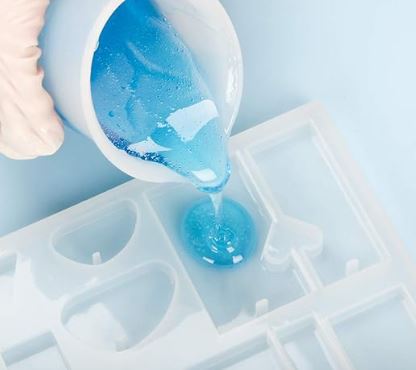
The resilient nature of silicone makes it a durable material, ensuring these mixing cups can be used repeatedly without compromising on performance.
They are a savvy investment that not only simplifies cleanup but also contributes to long-term savings, making them an indispensable tool for any resin artist or hobbyist.
Getting resin out of mixing cups & Molds FAQ’s
Can I reuse mixing cups & molds that still have some cured resin in them?
While it’s possible to reuse cups with minimal cured resin, it’s generally recommended to start with clean cups for each resin project.
Residue from previous mixes can affect the curing process and the quality of your new project.
What should I do if the resin has cured in the mixing cup or silicone mold?
If resin has fully cured, it becomes more challenging to remove.
Try scraping off as much as possible with a plastic tool, then soak the cup in warm, soapy water.
For stubborn spots, rubbing alcohol or acetone may be necessary. Be patient and repeat the process as needed.
Can I clean resin cups & molds in a dishwasher?
No, it’s not recommended to clean resin cups in a dishwasher, especially if they are plastic.
The high heat and strong detergents can damage the cup or leave residues that may affect future resin projects and your dishwasher.
Handwashing with warm, soapy water is a safer and more effective option.
Thanks a bunch for taking the time to read our guide on how to clean epoxy resin mixing cups and silicone molds!
Whether you’re a seasoned resin artist or just diving into the world of creative crafting, I hope these tips and insights make your resin adventures smoother and more enjoyable. Happy crafting!

